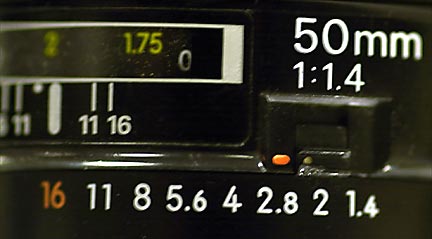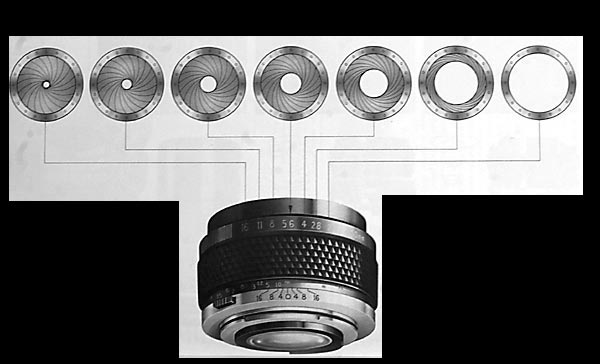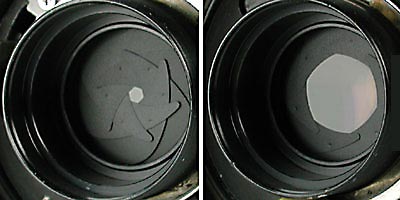The Aperture
   F16 F2.8
| The aperture
openings are built into the lens. They give us control over the amount of light that will fall onto the film or digital sensor. If we look at the Lens we will note a series of numbers on the barrel . 2, 2.8, 4, 5.6, 8, 11, 16 What do these numbers mean? It might seem strange at first, but the larger the number on the lens barrel, the smaller the actual opening of the aperture! The f system: The "f " system is the relationship between the focal length of the lens and the aperture opening. The letter F is not seen on the lens, the manufacturer used the number "1" instead. Look at one of your lenses and you might have the following on the barrel. 50mm 1:2, this means that your largest opening is at F2* (see below) How are the F stops worked out? If we are to use the standard lens (50mm) on our 35mm SLR camera as an example, we will find that: At the F2 setting, the diameter of the aperture opening is approx. 25mm. So 25mm divided into the 50mm lens and we have our F2 setting. At the F2.8 setting, the aperture opening is now only half the size, and allow only half the amount of light in! At the F4 setting, the aperture will allow only half the amount of light of the F2.8 setting. At the F5.6 setting, the aperture will allow only half the amount of light of the F4setting, and so on down to F16. Why in halves? The reason that the F stops are designed to half or double, comes down to the fact that the light intensity must be doubled or halved before the human eye will recognize the difference.
The illustration left gives us an idea, as to how the Lens openings might look at any given apertures. F16 to the left and F2 to the right.The apertures we can now see control half of our overall exposure. It is however the visual byproduct of that control that will interest us the most as photographers. Let us now examine one of
the great tools in creative photography:
|